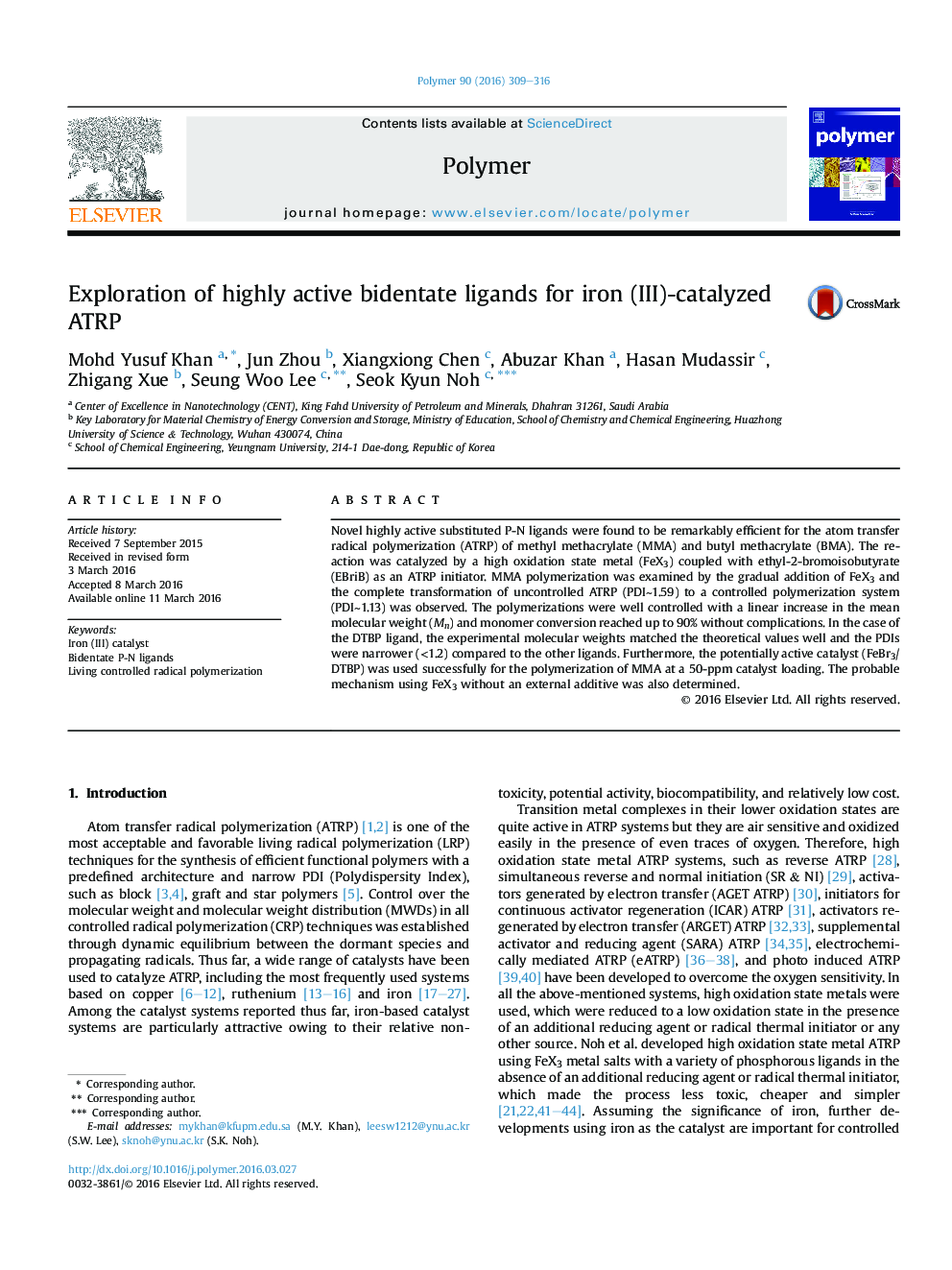| Article ID | Journal | Published Year | Pages | File Type |
|---|---|---|---|---|
| 5179157 | Polymer | 2016 | 8 Pages |
â¢Uncontrolled polymerization system can be entirely changed to controlled system simply replacing Fe(II)X2 by Fe(III)X3 without any external additive.â¢Active catalysts [Fe(III)X3] with new bidentate (N-P) ligands were explored for the polymerization of MMA, BMA and Styrene with ppm level of catalyst maintaining living character of polymer.â¢In situ reduction of Fe(III) to Fe(II) was observed by P-N ligand mainly which was analyzed by UV/vis/NIR spectroscopy respectively.
Novel highly active substituted P-N ligands were found to be remarkably efficient for the atom transfer radical polymerization (ATRP) of methyl methacrylate (MMA) and butyl methacrylate (BMA). The reaction was catalyzed by a high oxidation state metal (FeX3) coupled with ethyl-2-bromoisobutyrate (EBriB) as an ATRP initiator. MMA polymerization was examined by the gradual addition of FeX3 and the complete transformation of uncontrolled ATRP (PDIâ¼1.59) to a controlled polymerization system (PDIâ¼1.13) was observed. The polymerizations were well controlled with a linear increase in the mean molecular weight (Mn) and monomer conversion reached up to 90% without complications. In the case of the DTBP ligand, the experimental molecular weights matched the theoretical values well and the PDIs were narrower (<1.2) compared to the other ligands. Furthermore, the potentially active catalyst (FeBr3/DTBP) was used successfully for the polymerization of MMA at a 50-ppm catalyst loading. The probable mechanism using FeX3 without an external additive was also determined.
Graphical abstractThree different hetero-chelate ligands possessing nitrogen (-N) and phosphorus (-P) were examined for iron-mediated ATRP of MMA, BMA and styrene. The kinetic studies showed ATRP trend during polymerization. Polymerizations using lower oxidation state metal (FeX2) showed uncontrolled behavior (like high molecular weight distribution â¼1.58 and constant molecular weight after 50% monomer conversion). However, complete transformation of uncontrolled to controlled polymerization was noticed while introducing deactivator (FeX3) to the polymerization system and best-controlled results found by employing (FeX3) only. The results obtained were compared and a probable mechanism was proposed.Download full-size image
